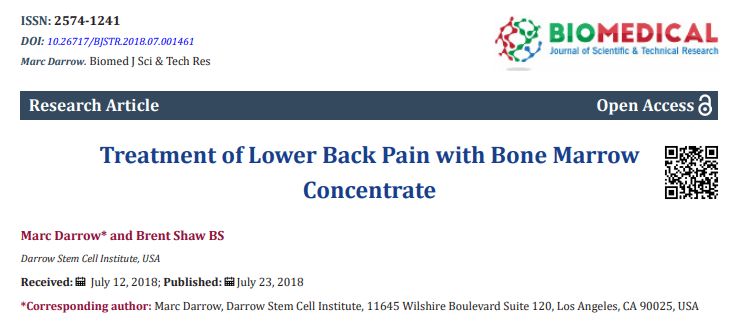Back Pain Care
In our over 25 years of helping people with back pain treatment in Los Angeles, we have been able to help patients with a diagnosis of:
- Post-surgical soft-tissue damage
Conservative care options for Back Pain Treatment in Los Angeles:
For some people, conservative care non-surgical options can be very successful. For others, these treatment’s effectiveness may have worn off if they were effective at all.
We see many people who have had one, many or all of these back pain treatments in Los Angeles below:
- Daily anti-inflammatory usage
- Yoga
- Acupuncture
Treatments for Back Pain
Our published research on PRP injections for back pain
Our published research on Bone marrow concentrate injections for back pain
We have published research on the treatment of Low Back Pain with Bone Marrow Concentrate Stem Cell Injections. The research appears in the peer-reviewed Biomedical Journal of Scientific & Technical Research (BJSTR).
Call for a free phone consultation with our staff
With over 25 years experience in regenerative medicine techniques and the treatment of thousands of patients, Dr. Darrow is considered a leading pioneer in the non-surgical treatment of degenerative Musculoskeletal Disorders and sports related injuries. He is one of the busiest Regenerative Medicine doctors in the world. Dr. Darrow has co-authored and continues to co-author leading edge medical research including research on bone marrow derived stem cells. He also comments and writes on research surrounding the treatment of chronic tendon injury, ankle and foot pain, elbow, hand and finger pain.
Back Pain FAQ
Contact our staff
Please have joint rehab doctors or staff contact me by email, phone, or text.







